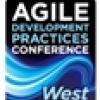|
An Evaluation Framework for Continuous Integration Tools Tools that enable continuous integration are vital to any agile project. Learn how putting together a well-planned evaluation process for the selection of those tools enables your entire team to work more cohesively, while eliminating the waste and damage that ineffective tools can cause. |
||
|
Is Your Agile Audit and Compliance Process Really Agile? In a previous column, George Schlitz proposed that process improvements, such as agile, require organizations to change process rules. Now George continues his review of agile in regards to compliance and auditing practices. What he's found is that changes to compliance and auditing rules may appear compatible, but the implementation process usually remains unchanged and conflicts with agile practices. |
||
|
Moving Gradually to Agile Development and Scrum Having troubles introducing agile development on your custom software development projects? Why not try moving to it gradually? One of the big ‘problems’ with Scrum is that project-related issues come to the surface early because the team must deliver potentially release-able software within a month. Those issues in combination can seem insurmountable to those new to Scrum. |
||
|
Scrum Success in a Distributed Team Environment In today’s work environments, research proves that distributed Scrum teams can achieve the same quality results as co-located teams, but relationships, communication and culture play important roles in the latter. About Scrum Since its inception in 1993, Scrum has become a more and more popular software development framework among organizations. In fact, a Forrester research study, conducted in the fourth quarter of 2008 discovered that more than half of the 2,227 surveyed software organizations take advantage of some form of agile methodology. Additionally, of all the agile methods that are being utilized, Scrum is by far the most popular model. |
||
|
Agile? Waterfall? How About WetAgile? WetAgile can be used to describe those projects, and people, that aren't quite agile, nor are they fully waterfall. While this might seem like seem like a negative, existing in "no man's land," the hybrid approach is sometimes may work fine, while on the path to full agile. |
||
|
Lean-Agile Projects You Will Do Again and Again How many times have you seen this scenario? Several years ago, someone created a spreadsheet to support the work of a department. They kept tweaking it, adding functionality; maybe even migrated it to Microsoft Access… and now it has become a mission-critical mess! And you can’t afford to let the employee move on to something else. |
||
|
Exploring the Subtle Differences Between Agile Paradigms In recent years within the object oriented and agile community, several approaches to software design and development have materialized and are in use by professional software developers. Test-Driven Development (TDD), Domain-Driven Design (DDD), Behavior-Driven Design (BDD) and Feature-Driven Design (FDD) are some of the more well known approaches. While these philosophies all imbibe the classic agile principles of an incremental and iterative mindset to software development, they subtly differ from each other. |
||
|
Falling Back to a Virtual Daily Scrum One of the key processes in an Agile Scrum development process is the daily stand up or Scrum meeting. Yet there are many teams who seek to be Agile but are part of distributed or virtual teams. This article describes a mitigation for the lack of collocation either due to permanent distribution as in geographically distributed teams or “plan B” meetings on “snow days”. This virtual daily scrum process cannot replace the benefits for a real scrum meeting with rich non verbal communication but it can be a very effective process in a distributed or “Scrum But” environment.
|
Scott Schnier
June 7, 2010 |
|
 |
Amplifying Collaboration with Guerilla Facilitation Sometimes, an ineffective meeting can be more damaging than no meeting at all. But, if you're not the person in charge of facilitating the meeting, how can you help keep the group and the meeting in line? In this article, Ellen Gottesdiener offers some suggestions for both facilitators and non-facilitators that may help ease some of your meeting frustrations. |
|
|
We're All in the Same Boat Lisa Crispin dives into the "we're all in the same boat" theory and explains how it can't be more true in the software development world. From the need for common goals to going beyond taking responsibility for the team's actions, each team must know that you're going to fail or succeed together. |
Pages
Upcoming Events
| Sep 22 |
STARWEST Software Testing Conference in Anaheim & Online |
| Oct 13 |
Agile + DevOps USA The Conference for Agile and DevOps Professionals |
| Apr 27 |
STAREAST Software Testing Conference in Orlando & Online |







